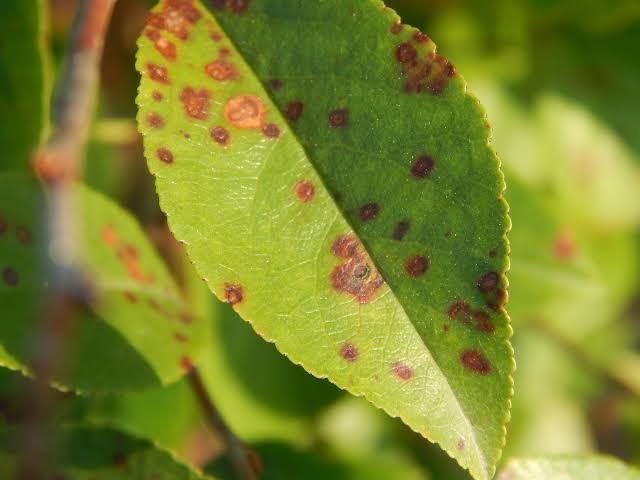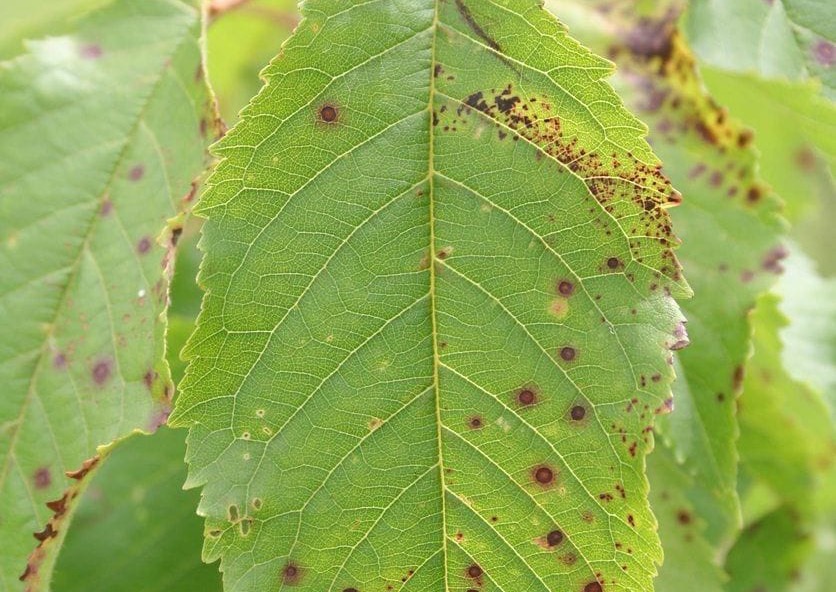Sweetcherry Plant
Sweet cherry trees, 20-30 feet tall in Zones 5-8, thrive in well-drained soil and full sun. With moderate growth, they produce delectable and edible cherries.

Habit
Tree
Height
5-10 m
Growth
Moderate
Soil
Well-drained, loamy
Shade
Full Sun
Moisture
Moderate
Edible
Yes
Medicinal
Yes
Origin
Europe, Asia
Climatic Condition
Temperate
Temperature (°)
15-25°C
Humidity (%)
60-80%
Potting media
Loamy, peat
Fertilizers
Organic, balanced NPK
Watering
Regular
Plant Weight
100-200 g
Flowering Time
Spring
Soil Ph level
6.0 - 7.5
Water Ph level
6.0 - 7.5
Soil EC
1-2 dS/m
Yield Per Plant
Fruit-bearing
NPK ratio
10:15:10
life Span
Deciduous
Health Benefits
Edible fruit, antioxidant-rich
Suggested Grow Media or Potting Mix ?
40% compost, 30% peat moss, 30% perlite
Suggested Fertigation/Fertilizers
Fertilize every 2 weeks with a balanced, water-soluble fertilizer.
Common Diseases and Remedies
Leaf Spot , Silver Leaf Canker
Blackish circular spots and yellowing on of leaf , Shinning appearance of silver colour on leaf surface
Cow urine 25 ml per lt
HEALTH BENEFITS
· High in antioxidants, fiber, and vitamin C.
· Supports heart health, reduces inflammation, and improves sleep quality.
What Is An Sweet cherry ?
Cherries are delicious fruits that come in many varieties, both sweet and sour. Not only are they delicious, but they're also packed with nutrients like antioxidants and vitamin C.
Cherries are small, round fruits that can be sweet or tart. They grow on trees, also known for their flowers. Cherry trees grow all over the world in regions that are neither too hot nor too cold. Different types of cherry trees produce sweet and sour cherries.
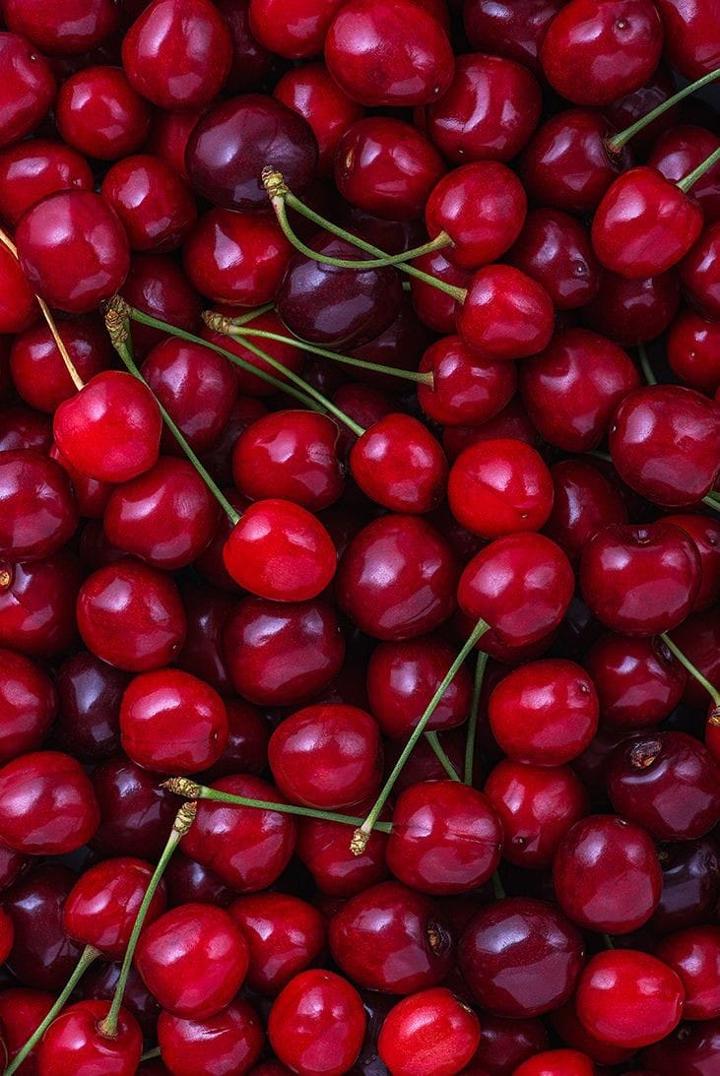
What Are The Different Types Of Sweet Cherry Plants?
1. Bing Cherry
When you picture a cherry in your mind, it's probably a Bing Cherry. Red fruit, like this one, are juicy at heart, sweet and slightly sour, with a hint of sourness that gives them the perfect balance. They're good for snacks, and their sweetness makes them ideal for simple desserts like cherry bolognese with vanilla ice cream or for making cherry jam.
2. Black Cherry
As the name suggests, the skin of this fruit is darker than most fruit types. The black cherry tree is related to the wild cherry but is taller and has sweeter fruit. As cherries ripen, they turn from red to deep purple and eventually almost black. They taste great in raw foods like yogurt or in baked goods like Black Forest panettone pudding.
3. Montmorency Cherries
Light red, tart cherries grow only in Michigan, making them popular in the Midwest. Their strong flavour makes them unsuitable for snacking, but they are suitable for baking like cherry pie. Mix them with sugar for a great cherry pie or use them to make a delicious cherry-raspberry jam. They are also great for making delicious juices that are good for your health.
4. Morello Cherry
Morello cherry refers to a family of cherries popular for use in pies and other baked goods. Like Montmorency cherries, Morello cherries are very tart, too tart for most people to eat them raw. Use them in your favourite cookie recipe or make a sauce to bring out the flavour of your favourite dishes, like in this recipe baked with cherry sauce. Here are some cherry recipes to get you started.
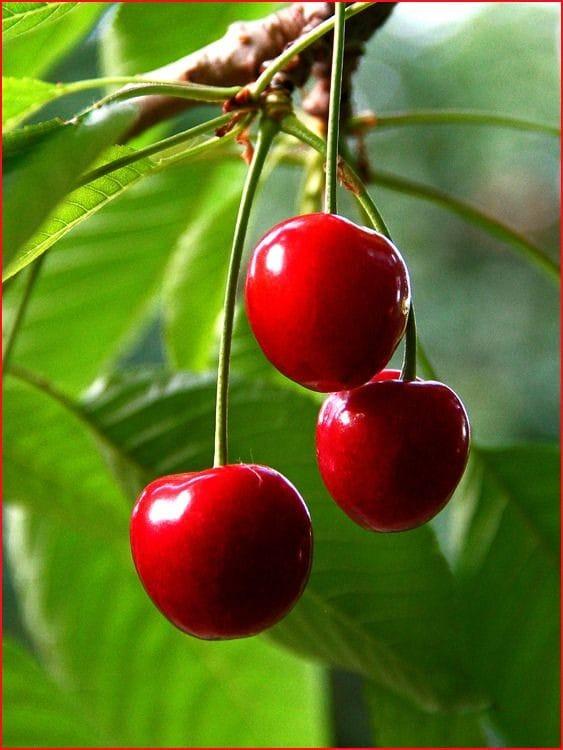
How to care for Sweet cherry Plants ?
Caring for cherry trees involves several important steps to ensure they thrive and produce abundant flowers. Here are some simple maintenance tips:
1. Location
Cherry plants thrive in well-drained soil and prefer full sun, so choose a location that receives at least 6-8 hours of direct sunlight per day. Make sure the soil is slightly acidic to neutral. Water regularly to keep the soil moist but not waterlogged. Use mulch around the base to retain moisture and reduce weeds. Prune in late winter to remove dead or diseased branches and encourage healthy growth. Consider the characteristics of the cherry plant you have because its care will be slightly different.
2. Sunshine
Cherry trees do well in full sun. Make sure it gets at least 6-8 hours of direct sunlight per day. Provide well-drained soil and water regularly, keeping the soil balanced but not waterlogged. Mulching can help retain moisture. Fertilize with a balanced fertilizer throughout the growing season. Prune to remove dead or diseased branches and keep the plant healthy. Maintain warmth and consider covering the seeds during frost. Check for diseases and infections regularly and solve all problems in time.
3. Soil
To care for your growing soil, make sure the soil is well-drained and rich in organic matter. Apply a balanced fertilizer in spring and mulch around the base to retain moisture. Water regularly to keep the soil evenly moist but not waterlogged. Watch for pests and diseases, and prune as needed to encourage aeration and healthy growth.
4. Hydration
Water your cherry plant regularly to maintain moisture and keep its soil balanced. Use well-drained soil and water when the topsoil is dry. Adjust watering frequency according to the environment such as temperature and humidity. Avoid overwatering as cherry plants are sensitive to waterlogged soil. Mulching can help retain moisture and maintain soil temperature. Check your plants' leaves regularly to see if they are dehydrated or overwatered, and adjust your watering routine accordingly.
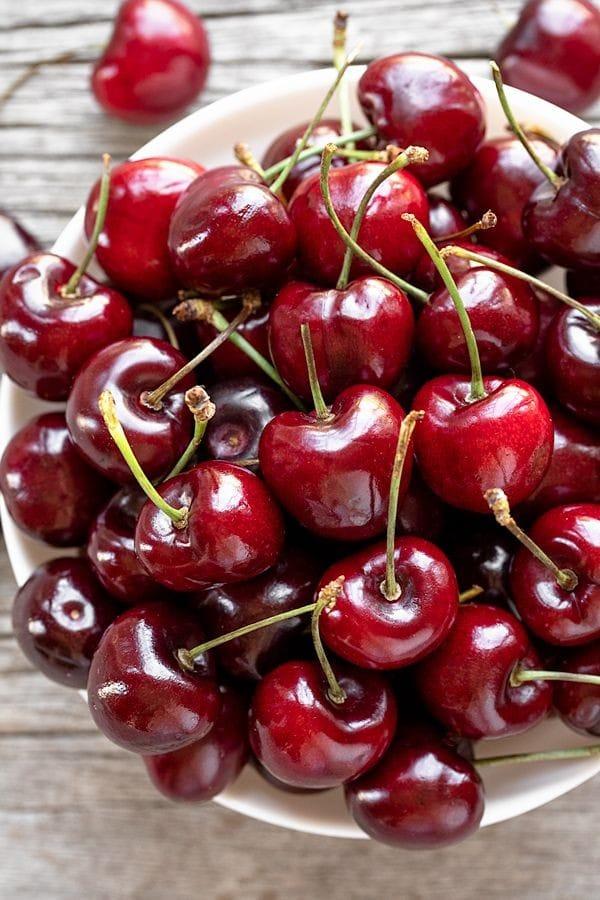
5. Nourishment
To care for your cherry tree, make sure it receives full sun (6-8 hours per day), well-drained soil and regular water. Fertilize in spring with a balanced fertilizer and prunes to remove dead or crowded branches. Watch for pests and diseases and consider using a layer of mulch to retain moisture
6. Issues
Pest Control: Check your plants for pests such as aphids or caterpillars. Use insecticidal soap or neem oil to control them.
Watering: Make sure the water is consistent. Cherry plants generally prefer well-drained soil. Avoid excessive watering, which can cause root rot.
Fertilization: Appropriate fertilizer is applied according to the needs of the plants. Too much fertilizer can harm plants, so follow the recommendations.
Pruning: Regularly prune dead or diseased branches to promote healthy growth. Proper pruning can also improve air circulation.
Sunlight: Make sure plants receive adequate sunlight. Cherries grow in full sun, so consider relocating them if they are in the shade.
Disease Control: Watch for diseases such as brown rot or powdery mildew. Treat with fungicide if necessary and follow recommended disease control.
Mulch: Apply a layer of mulch around the base to retain moisture and reduce weeds.
Soil pH: Check the soil pH to make sure it is in the best range for your cherry plants, usually around 6.0 to 6.8.
What are the Benefits of Sweet Cherry ?
Cherry tree has many benefits, including:
Nutritious Fruit: Cherries are rich in antioxidants, vitamins (such as vitamin C), and minerals that contribute to health and wellness. .
Anti-Inflammatory Properties: Cherries contain compounds with anti-inflammatory properties that may help reduce inflammation and other ailments.
Improves sleep: Cherries naturally contain melatonin, an anti-sleep hormone that can help improve sleep quality and regulate sleep patterns.
Heart Health: Antioxidants in cherries may improve heart health by reducing oxidative stress and inflammation, which may reduce heart problems.
Arthritis: Some studies show that cherries have anti-inflammatory properties and may help reduce symptoms of gout and arthritis.
Weight Control: Cherries are low in calories and high in fiber, making them a healthy snack that can help with weight control.
Cancer Prevention: Some compounds in cherries (such as anthocyanins) have been studied for their important role in preventing cancer by inhibiting the growth of cancer cells.
Diabetes Law: The fiber and glycemic index contained in cherries will help control blood sugar, making cherries an option for diabetic patients.

FAQs About Growing Sweet Cherry
1. What are the best growing conditions for cherry plants?
2. What are the nutritional benefits of eating cherries?
Cherry is a fruit containing vitamins, minerals and antioxidants. They are especially rich in vitamin C, potassium and fiber. Additionally, cherries contain antioxidants such as anthocyanins and quercetin, which have anti-inflammatory and cardioprotective properties. Eating cherries may also help improve health, improve sleep quality, and restore function.
3. How to propagate cherry plants from seeds or cuttings
For seeds: Collect mature seeds and extract the juice. Place the seeds in a container filled with moist soil or vermiculite and refrigerate for 10-12 weeks to stratify (simulate winter). After stratification, sow the seeds in pots with well-drained soil and cover lightly. Keep the Soil moist and place the pot in a warm, sunny location. When the seedlings are large enough, transfer them to a larger pot or a suitable location outdoors. Cuttings: Use cuttings from healthy, mature cherry trees during the dormant season (winter through early spring).Cuttings should be approximately 6-8 inches long and have at least two leaves. Remove all leaves from the bottom half of the cutting and dip the cut end in hormone .Plant the cuttings in a pot with well-drained soil or rooting medium. Keep the soil moist and place the pot in a warm, moist location with direct sunlight. Roots should begin to form within a few weeks. Once rooted, transfer the cuttings to a larger pot or a suitable outdoor location. Section Make sure you propagate your cherry trees properly and keep them growing.
